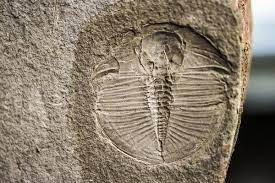Introduction:
As humanity moves forward with rapid industrialization and urbanization, we often overlook the importance of the very ground beneath our feet. Our geological heritage, which includes fossils that have survived millions of years, is an essential component of our overall cultural heritage. The preservation and protection of fossils play a critical role in understanding our planet’s history and evolutionary processes.
The value of fossils:
Fossils help scientists glean vital insights into Earth’s past climate, ecosystems, and life forms. This valuable knowledge can inform our understanding of current environmental challenges, such as climate change, and support decision-makers in developing better conservation strategies.
Moreover, many fossils have immense aesthetic appeal due to their unique shapes and intricate detailing. They serve as key tourist attractions, contributing significantly to the economies of many countries. Additionally, fossils inspire artistic endeavors and captivate people’s imaginations by providing a tangible connection to Earth’s prehistoric eras.
Current challenges:
Despite their invaluable contributions to science and culture, fossils face various threats worldwide. Illegal fossil excavation and trafficking are on the rise as demand increases for both scientific inquiry and private collectors. This illicit trade depletes Earth’s natural history resources while preventing scientists from studying specimens in their original context.
Another challenge stems from habitat destruction caused by human activities such as urban expansion, mining operations, and agriculture practices. Entire geological sites may be irreparably damaged or lost in pursuit of contemporary economic growth.
Efforts towards protection:
Recognizing the importance of fossil preservation, several countries have enacted laws to safeguard their geological heritage. Measures include setting up protected areas where fossil collection is strictly regulated, creating databases to catalogue specimens found within national borders, and implementing strategies for sustainable tourism development around significant fossil sites.
International collaborations also contribute positively with shared expertise and technology helping improve protection efforts globally. For instance, UNESCO has established its Global Geoparks Network (GGN), comprising 169 UNESCO Global Geoparks across 44 countries, to promote and protect Earth’s history resources.
Public awareness:
To bolster these efforts, boosting public awareness of the immense importance of preserving fossils is vital. Educational programs that inform and engage people are needed to ensure communities understand the significance of their geological heritage. By fostering a sense of stewardship for these precious resources, we can empower society at large to join in protecting them.
Conclusion:
As custodians of Earth’s natural history, we must understand their vulnerability and implement strategies to safeguard invaluable fossil resources from neglect or destruction. By prioritizing the conservation and promotion of our geological heritage, we not only preserve essential knowledge for future generations but also demonstrate humanity’s commitment to preserving our planet’s legacy in its entirety.





